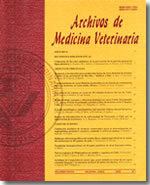Investigation into the healing properties of walnut (Tetracarpidium conophorum) leaf and onion (Allium cepa) bulb residues in Clarias gariepinus
Main Article Content
Abstract
The study evaluated the effect of dietary inclusion levels of walnut leaf (WL) and onion bulb (OB) residues on dermal wound healing of Clarias gariepinus. The experiment was carried out in 9 experimental tanks (1.8 m x 2 m x 1.2 m) for 14 days. Nine experimental diets were formulated at 40% crude protein representing the following inclusion levels: Control (0%), OB2 (0.5%), OB3 (1.0%), OB4 (1.5%), OB5 (2.0%), WL6 (0.5%), WL7 (1.0%), WL8 (1.5%) and WL9 (2.0%). Fish (mean weight of 1kg) were fed twice daily at 3% body weight. Percentage healing and daily healing rate on lateral and caudal parts of the male and female Clarias gariepinus were investigated at 0, 7 and 14 days. Data were analysed using descriptive statistics and ANOVA at P < 0.05. The results demonstrated that the fish fed with walnut leaf and onion bulb residues showed better performance than the control. Dermal wound healing of Clarias gariepinus was better on lateral and caudal parts (100%, 14.29; 100%, 14.29) in WL 8 compared to the control (98%, 14.00; 80%, 11.43) respectively. The results obtained showed that the male Clarias gariepinus had better healing compared to the female (100%, 14.29; 82%, 11.71), respectively. Diets with walnut leaf and onion bulb residues had wound healing properties and they could be use in fish farming. Also, the inclusion of 1.5% of walnut leaf residue in fish feed promotes wound healing in Clarias gariepinus.

